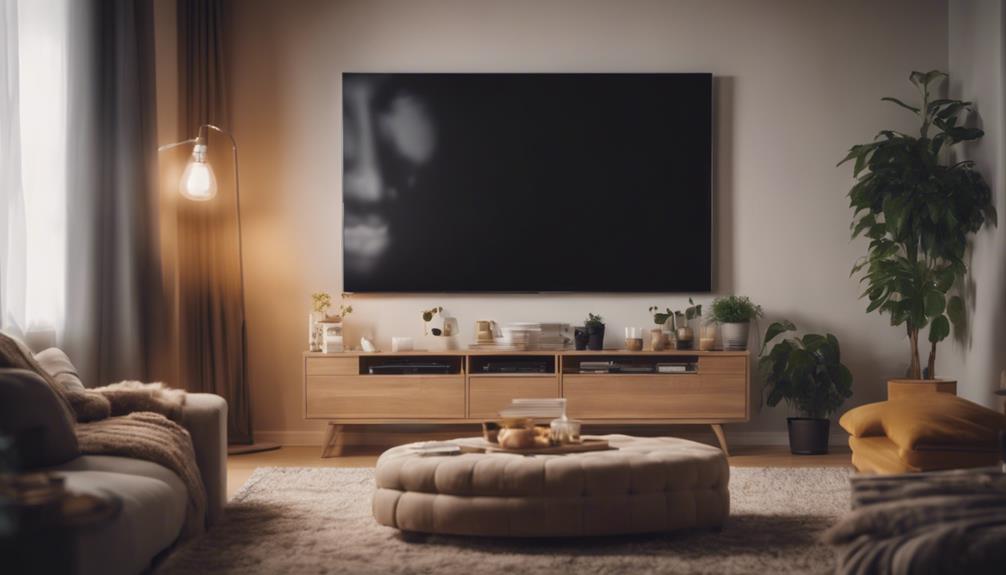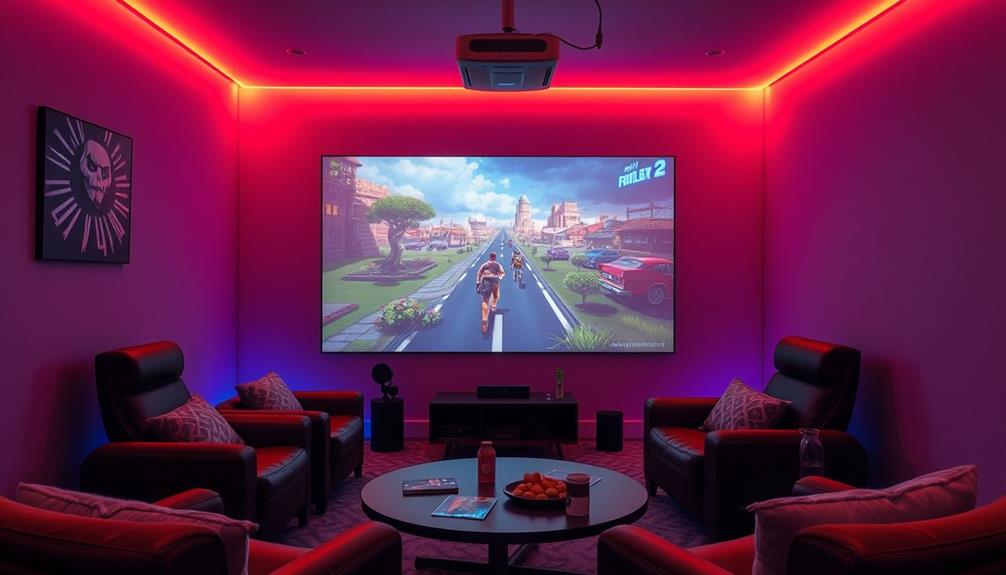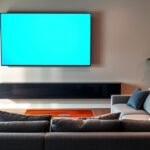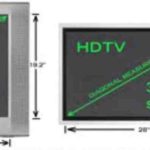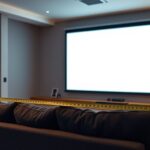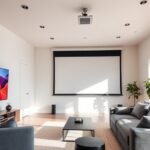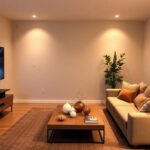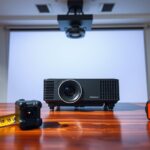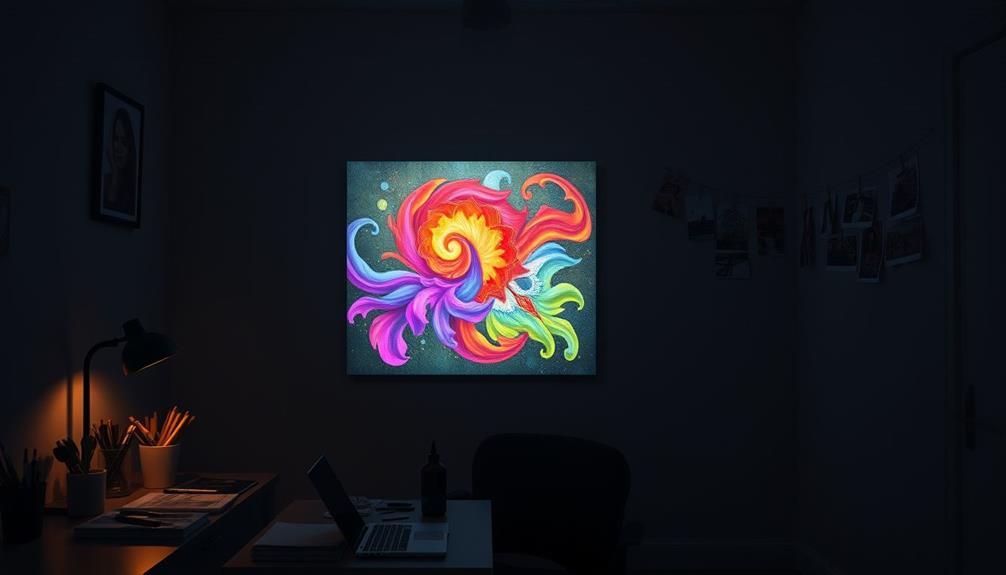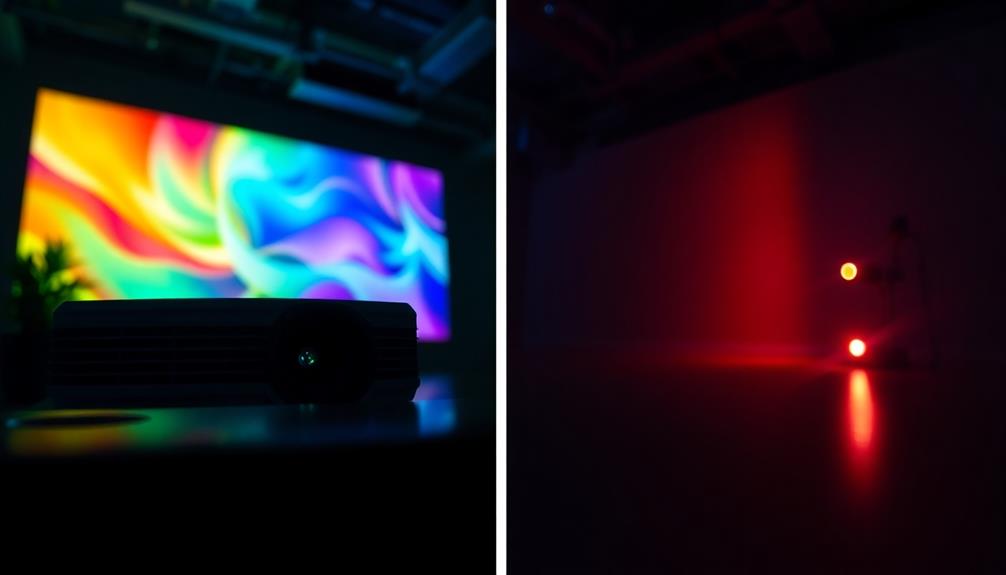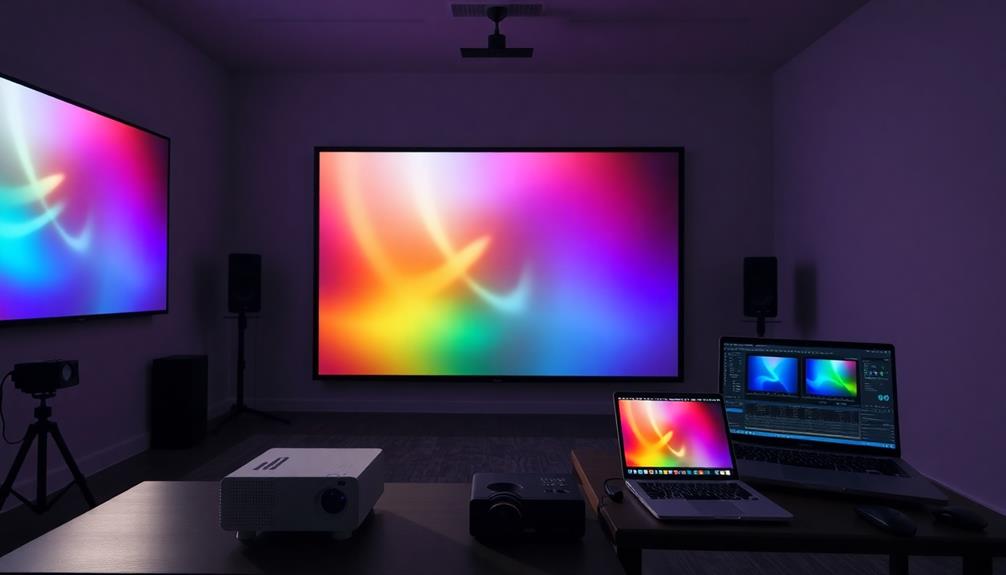To calculate the ideal screen size for your room, first measure the distance from your seating to the screen in inches. Then, simply divide that number by 1.6. For example, if you're sitting 8 feet away (96 inches), a screen size of about 60 inches would be ideal. Remember to take into account the room's layout and seating arrangement to guarantee everyone has a comfortable viewing angle of at least 30 degrees. Also, factor in your screen's resolution, as higher resolutions can allow for closer seating. Keep going to discover more tips for finding the perfect screen size!
Key Takeaways
- Measure your viewing distance in inches and divide by 1.6 to find the ideal screen size in inches.
- Ensure your seating allows for a minimum 30-degree viewing angle for optimal comfort.
- Consider the room layout; larger rooms can accommodate bigger screens for better immersion.
- Factor in the resolution; higher resolutions like 4K allow for closer seating without pixelation.
Understanding Screen Size Basics
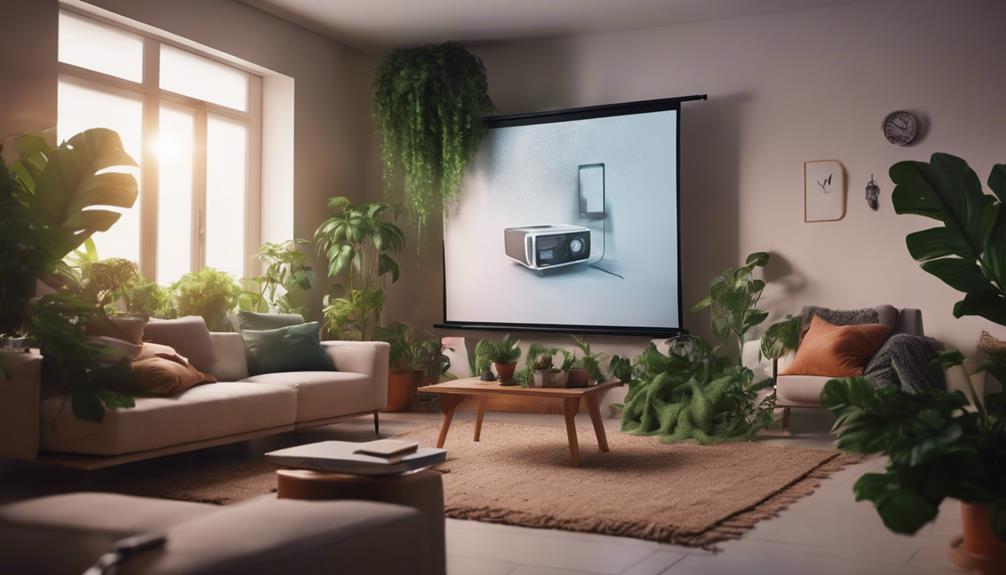
When choosing a screen, it's essential to understand that screen size is measured diagonally in inches, influencing your viewing experience considerably.
The size of your TV screen plays a significant role in how enjoyable your viewing sessions will be. To find the ideal screen size, you need to take into account the viewing distance, which is the distance between your seating area and the screen itself. A common guideline suggests that you can calculate the ideal screen size by dividing your viewing distance (in inches) by 1.6.
Additionally, the room dimensions impact your choice. A larger room allows for a bigger screen, while a smaller space might require a more compact size.
Don't forget about pixel density and resolution; higher resolutions like 4K enable you to sit closer without seeing pixelation, enhancing your viewing experience.
When you take all these factors into account, you can calculate the ideal screen size that suits both your room and your preferences. By understanding these basics, you'll be better equipped to choose a TV that fits perfectly into your space and meets your viewing needs.
Using the Screen Size Calculator
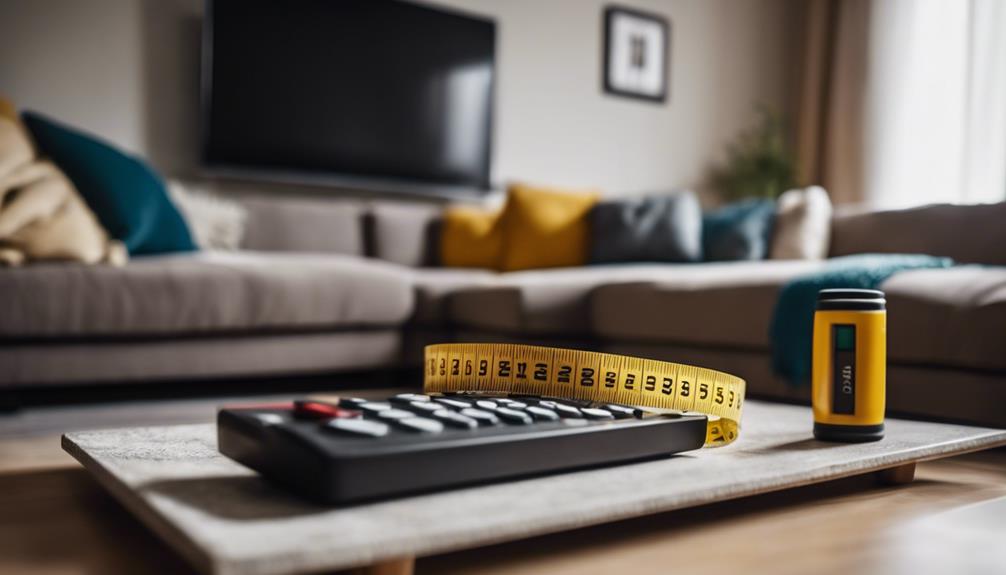
Now that you understand the basics of screen size, you can effectively use a screen size calculator to find the perfect fit for your space.
Start by accurately inputting your room dimensions, as this guarantees a tailored recommendation tailored to your environment.
Specify the audiovisual room orientation, since it impacts the ideal viewing distance and screen placement for your viewing preferences.
Next, select the display purpose—whether it's for general viewing or decision-making—to receive size recommendations that suit your needs.
Keep in mind the source resolution, like 4K, when calculating screen size. Higher resolutions allow for closer viewing distances without sacrificing clarity, so your screen fills the field of view effectively.
Key Factors for Screen Size
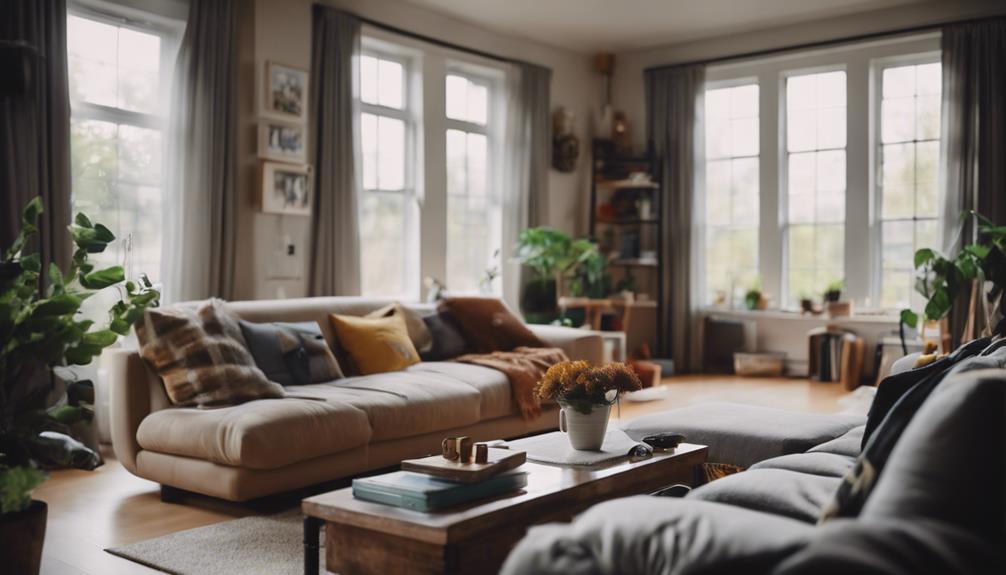
When you're choosing a screen size, viewing distance is essential; it helps you find the right fit for your space.
Don't forget to take into account your room layout, too, as it affects how comfortably you can arrange your seating.
Balancing these factors guarantees you get the best experience without crowding your area.
Viewing Distance Importance
Understanding how viewing distance impacts your screen size choice is essential for creating a perfect viewing experience. The recommended viewing distance is often calculated by multiplying the screen size in inches by 1.6. For instance, if you opt for a 65-inch TV, the perfect viewing distance is around 8.9 feet. This distance guarantees maximum comfort and picture quality, allowing you to enjoy the full field of vision without straining your eyes.
Using a TV Size to Distance Calculator can help you determine the best fit for your room size. If you prefer closer seating, you might consider larger screens, as they allow for a more immersive experience without noticeable pixelation, especially with high-resolution displays like 4K or 8K.
The Society of Motion Picture and Television Engineers (SMPTE) recommends maintaining a viewing angle of at least 30 degrees for comfort, and ideally 40 degrees for a more engaging atmosphere. By understanding these factors, you can confidently select a perfect screen size that enhances your viewing pleasure while considering your unique room layout and seating arrangement.
Room Layout Considerations
Room layout plays an essential role in determining the ideal screen size, as the arrangement of furniture and seating directly impacts your viewing experience. To achieve comfortable viewing, consider these key factors:
- Viewing Distance: Aim for a distance of 1.6 times the screen size in inches for peak screen size.
- Field of Vision: Verify your seating allows for a minimum 30-degree field of vision; this prevents neck strain.
- Furniture Placement: Position your furniture to enhance viewing angles while keeping the screen fit within the room's dimensions.
- Room Dimensions: Measure the space to make certain the screen fits well, avoiding obstruction or poor sight lines.
Choosing TV Sizes for Rooms
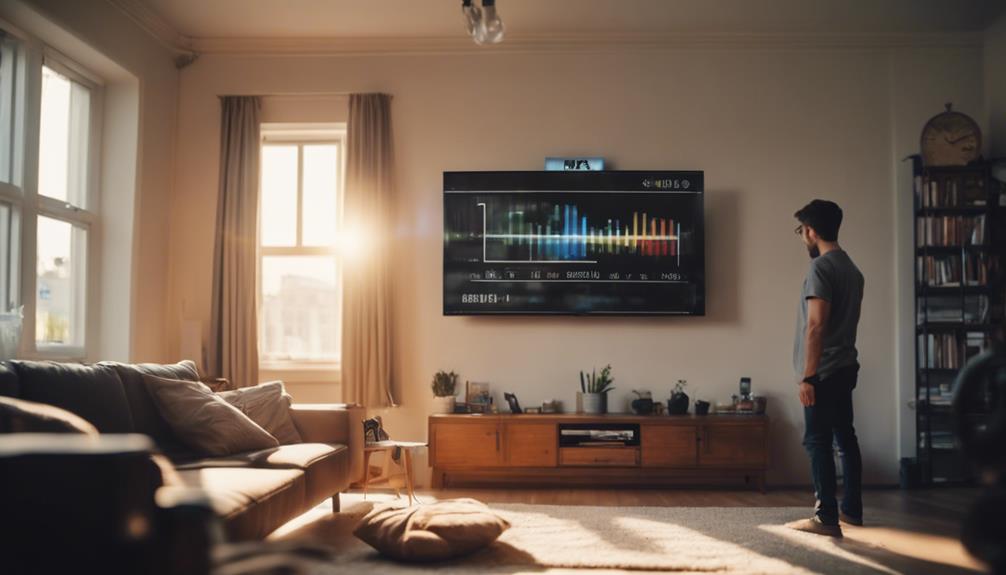
Choosing the right TV size for your space can enhance your viewing experience and guarantee comfort while watching. To find the ideal screen size, start by measuring your viewing distance in inches and dividing that number by 1.6. This calculation gives you the best screen size in inches. For instance, if you sit 6 feet away, a 45-inch TV is ideal, while a 10-foot distance suggests a 75-inch model.
It's also essential to evaluate the viewing angle. The Society of Motion Picture and Television Engineers recommends a minimum viewing angle of 30 degrees to secure an immersive experience. For home theater setups, THX guidelines indicate that a 100-inch screen works best at about 10 feet, enhancing your visual clarity without straining your eyes.
In smaller rooms, tailored recommendations help, like using a 42-inch TV for distances between 1.2 to 1.8 meters. This approach guarantees comfortable viewing without sacrificing visual detail, allowing you to enjoy your favorite shows and movies to the fullest.
Viewing Distance and Recommendations

To optimize your viewing experience, it's important to take into account the ideal distance from your TV based on its size. The right viewing distance guarantees comfortable viewing and enhances your overall enjoyment. Here are some key points to evaluate:
- For a 55-inch TV, aim for about 7.5 feet (2.3 meters).
- A 75-inch TV requires a distance of around 10 feet (3 meters).
- Follow SMPTE guidelines: sit at least 1.5 times the diagonal screen size away.
- Use the formula: divide your viewing distance (in inches) by 1.6 to determine the ideal screen size.
Personal Preferences in Screen Selection
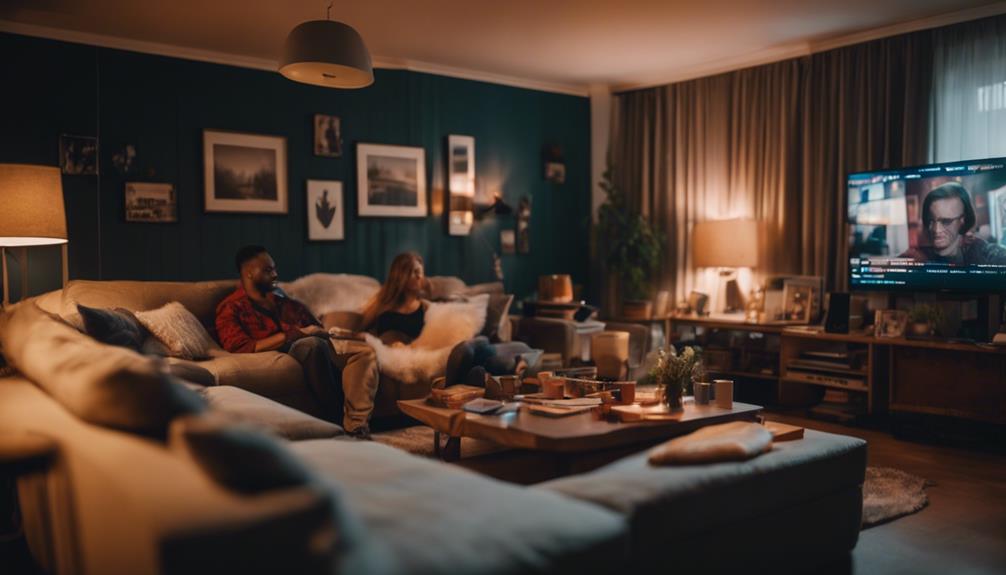
When selecting a screen size, your personal viewing habits and preferences greatly influence the best choice for your space.
If you love immersive cinematic experiences, you might lean towards larger screens of 70 inches or more, especially if your viewing distance is around 10 feet. This size enhances immersion and makes you feel part of the action.
On the other hand, for casual viewing—like catching up on the news or cooking shows—a smaller screen, between 40 to 55 inches, could be perfectly adequate, particularly in smaller rooms with limited viewing distances.
Comfort is essential, so consider your eye level when seated. Aim for a screen that aligns with your mid-screen eye level and maintains a viewing angle of 15 degrees or less to minimize eye strain.
Don't forget to factor in your room design; the screen size should complement the layout and decor of your space.
Ultimately, your personal preferences in content type and overall aesthetics will guide your screen selection, ensuring that your setup not only meets your viewing needs but also enhances your room's ambiance.
Frequently Asked Questions
How to Calculate Screen Size for Room?
To calculate screen size for your room, measure the viewing distance in inches and divide by 1.6. For a comfortable experience, make certain the screen fits within your space while considering your preferences and viewing angles.
What Is the Right Screen Size for Your Room?
To find the right screen size for your room, consider your viewing distance and space layout. For a comfortable experience, make certain the screen fits well within your room's dimensions and enhances your overall viewing pleasure.
How Do I Know What Size Screen I Need?
Did you know that watching TV on a screen too small can strain your eyes? To find the right size, measure your viewing distance, then divide by 1.6 for a comfortable, immersive experience you'll love.
What Size TV Screen Is Best for Bedroom?
For your bedroom, if you're sitting around 6 feet away, a 40-inch TV works best. At 6 to 9 feet, go for a 50-inch. For 9 to 12 feet, choose a 60-inch screen.
Conclusion
In summary, finding the ideal screen size for your room can transform your viewing experience.
For instance, if you have a 12-foot viewing distance, a 75-inch TV offers an immersive experience without overwhelming the space.
Remember to take into account your personal preferences and the room's layout.
So, whether you're binge-watching your favorite series or hosting a movie night, the right screen size makes all the difference.
Don't underestimate the impact of your choice!
